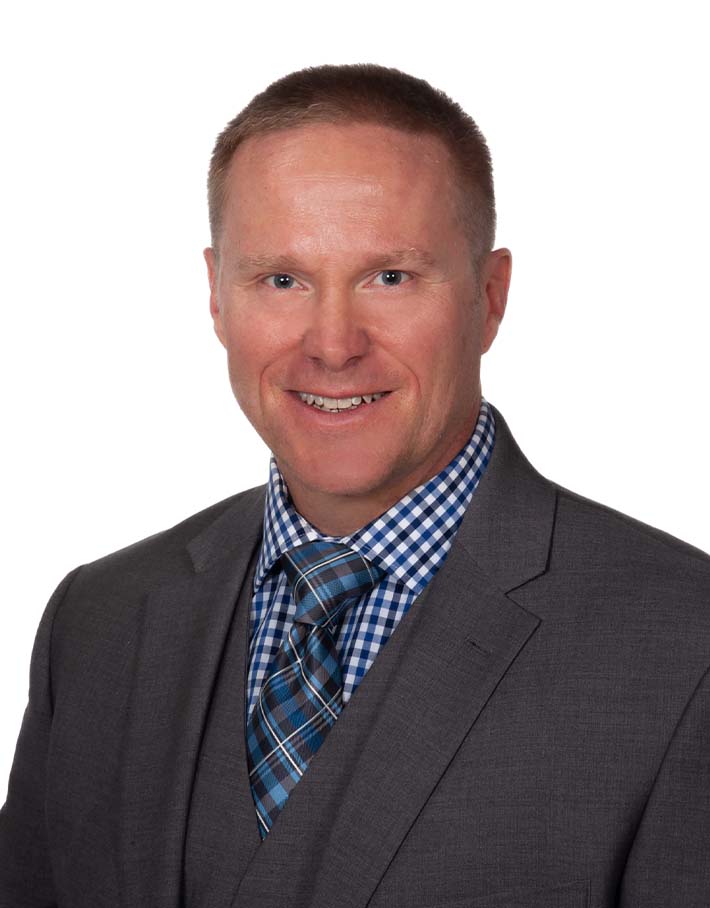SEC Issues Anticipated Exemptive Relief for Consolidated Audit Trail (CAT)
Subscribe to our original industry insights
The Consolidated Audit trail (CAT) is moving forward and the SEC has released new exemptive relief dates for parts 2a (Equity reporting) and 2b (Options reporting). The SEC has also provided exemptive relief for introducing brokers. In this episode, Oyster Consultants Ralph Magee and Jeff Call discuss what firms should be doing around certifications, linkages, testing validation and the upcoming options reporting deadlines. Oyster also has a new software testing application to validate firms’ CAT reporting. Learn more about the software in this episode, or by clicking here.
All industry member are encouraged to take advantage of this testing window, and many will need this time to prepare for the Production Readiness certification required to gain access to the CAT reporting environment. Oyster Consultants are leaders in the industry, able to guide clients through equities/OTC and options readiness, testing and validation. Our testing application will assess and manage errors to and from the CAT portal.
You can also listen to our podcasts and read our blogs to learn more about the new deadlines and what your firm should be doing to prepare.
For more information or a demo of the testing application, call (804) 965-5400 or complete a contact form and one of our associates will be happy to help you.
Transcript
Oyster: Welcome to this week’s serving of Oyster Stew, a mix of financial services, commentary and insights. Each week we’ll discuss what is happening in the industry based on what we see as we work with regulators and clients. We hope you come away with the knowledge and tools to help you make the best decisions for your firm’s future.
Elizabeth Gatlin: I’m Elizabeth Gatlin, your host for today’s podcast about the Consolidated Audit Trail, or CAT, reporting requirements. With me are Oyster Consultants Ralph MaGee and Jeff Call. As an Oyster Consultant, Ralph has led teams in large scale client remediation and clearing platform conversion related projects. Currently Ralph is using his expertise in trade reporting to provide large broker dealers, project management and subject matter expertise related to the Consolidated Audit Trail. Prior to becoming CEO of Devyze and developing the technology behind Oyster Solutions software, Jeff Call previously worked for 15 years at SunGard, most of that time as VP of Technology and CTO, which included the development of the Protogent trading surveillance program. In today’s podcast, we will continue our discussion about Oyster’s observations about what is currently happening with firms, the future phases of the CAT, how Oyster is helping its clients and how Oyster can help your firm. Ralph, can you summarize what we discussed during our last podcast?
Ralph Magee: Sure. Elizabeth. In the last episode we covered the timeline for the CAT implementation, as we knew it at that point, and what firms should be doing to prepare for this implementation. We followed it up with a blog post, which talked about the clients we are working with and what kinds of calls that we’ve started to receive as a firm regarding CAT reporting, especially from the perspective of our clients. And lastly, we introduced an efficiency tool that we’re using with our clients to validate their CAT reporting.
Elizabeth Gatlin: We have received great feedback from our clients on the CAT application. Jeff, can you give us an update on what is happening with the application and what you might’ve been working on since our last call?
Jeff Call: Thank you Elizabeth. Yes, we have made great improvements this past week on the source file comparison portion of the tool, where we’ll actually take in the source files from a beta or a flex trade, and we’ll take those files and compare those with the CAT data and make sure that everything matches appropriately. So for example, we’ll look at the symbol, we’ll look at the price, the quantity, the time and force, all the different parts of the original source compared with the CAT, and make sure that those are produced correctly. So that’s been one of our major focuses for the past couple of weeks. We’re also focusing this week on improving the error correction capability. You can correct your errors directly in the FINRA portal, but we have a much more user friendly tool that allows you to build that correction file within our CAT testing tool, that helps with both bulk repair, a lot more flexibility on how that bulk repair occurs.
Also, you can work with individual records, and then you can produce that CAT file for your error corrections and submit that to the FINRA portal. This week and next we’re focusing on intra-firm linking. Intra-firm linking is starting to be a high priority. The last call with FINRA, they’re starting to look at that now. Just from a high level you can’t see much detail yet, but with our tool you can actually get the detail of that intra-firm linking, between the new order, the route, the cancellation, the modify, etc. And so we’re making some enhancements to that area of the tool over the next week or two. And we’re really excited about the tool. It’s made a lot of great progress and we think it’s a great help for our clients to better analyze their CAT submissions.
Elizabeth Gatlin: Thanks, Jeff. It sounds like we are providing clients exactly what they need to analyze their CAT recording and maximize their efficiency. I know that you and Ralph have been doing some free demos of the product and we’ve recently added a link to our webpage where clients can request a demo. I also noticed that the SEC had a news announcement this week about CAT. Ralph, can you provide our listeners with details about this release?
Ralph Magee: Yes, Elizabeth. This is a highly anticipated announcement from the SEC that happened earlier this week. It is ironic that they waited until the first day of production go live test submissions to make that announcement. But nonetheless, they announced that they’re going to provide some exemptive relief to clients reporting for CAT. As you recall from the last podcast, at that time they had provided some exemptive relief, but it wasn’t on a phased in basis. Like the original timeline that FINRA had submitted, they had provided exemptive relief for 2a/2b until May 20th of this year. Well, in this latest release that came out last Monday, they provided exemptive relief that is more in line with the phases implementation of 2a/2b, and they’ve given relief for phase 2a until June 22nd. That’ll be your equity security reporting. And also for 2b, your options reporting, until July 20th. In addition, they have also provided some exemptive relief for introducing brokers, and this would follow a more lenient implementation timeline that was originally put forward for small broker dealers, if you’re qualifying small broker dealer who had not been previously reporting to OATS. So again, more more of a landing zone for those firms who have to coordinate many introducing brokers into their CAT reporting.
Elizabeth Gatlin: So what should firms be focused on now that the SEC has provided additional relief?
Ralph Magee: Well, if the firm is not certified currently to report to the production environment at FINRA, I think they should continue to work on getting certified. If they are certified, I believe that they should start reporting to the CAT production environment as soon as possible, and use this additional exemptive relief to utilize the CAT portal, to train their staff on how to use it, and how to do corrections within that CAT portal for their CAT reporting. Firms should also move their testing validations back to their source data. As Jeff had previously mentioned, I think that this helps to ensure compliance with CAT reporting, really looking for those things that might be falling through the cracks. You’d rather find them than have a regulator find them in the future. Firms should also start focusing on options reporting for 2b. The exemptive relief has provided them additional time until July 20th to work on that.
Some firms will need to re-certify for their options reporting and others will have already used the certification for 2a/2b to qualify for the FINRA production environment. For options firms should also focus on intra-firm linkages. As Jeff mentioned, this is a new focus, so it is the next phase implementation of CAT reporting, and firms should be looking at what they can control, because intra-firm linkages are all the firm has full control over – their routes, the receive of the new order from the client, the route of that order, the potential execution, cancellation and modification of that order. And then the last thing I would say, Elizabeth, is firms should likely start to prepare their project plans for the implementation of Phase 2c. So in the last couple of weeks we received new documentation, new tech spec documentation from FINRA, as well as a scenario document that outlined the requirements and reporting for Phase 2c.
Elizabeth Gatlin: Thanks. Ralph. Speaking of 2c and that release of the technical specs and scenario document, can one of you give me a high level overview of what kinds of new requirements that Phase 2c will bring?
Jeff Call: Hi, definitely Elizabeth, this is Jeff. I’ll go in and take this one. Just an update as well. 2c has been out for a while, a few weeks now, but they did actually post just yesterday an update. So R2 is out. The official latest release of the 2c spec is 310R2, and they also pushed out a companion update to that, 4282B. So 214R4 is the latest release there. If you look at 2c, probably the most visible piece with 2c is around sub-account allocations. And if you look at just a high level, the very top of that document, it’ll say “Phase 2c.” It will mention the go live date of April, 2021, and it will give a high level changes included with 2c. And so with allocations, there are a couple of new events that are required.
With that we have the MEPA event and we also have the MEAA event. So we have the post-trade allocation event, the MEPA, and the amended allocation event, the MEAA, and these are the two new events that are most talked about with 2c. This is where a lot of the work will be. You know, every industry member of the performance allocations and submits a post rate allocation event is required to deliver the MEPA event. And this is the one that will take some time to get right. So definitely recommend with 2c that you focus on the subaccount allocations. Now there are additional changes as well. So there are other new events. There are also some older events that have been changed slightly. So keep in mind that even though we talk about subaccount allocations is the main focus of 2c.
There are other events as well. MEORS (order out supplement event) is new with 2c. We have the eternal route modified event (MEIM) and the internal route canceled (MEIC) event. So those three events are new as well. Also, if you take the two documents and compare to 2a/2b and the 2c side by side, you’ll notice that there are some new columns required in some of the existing events. For example, the new order event (or, the MENO )has two new columns required: the solicitation flag and the RFQ ID. If you look down at the MENA, there’s a solicitation flag that’s new there as well. The MEOJ (or, order adjusted event) has a time and force, a new field that’s required and the trade event, (the MDOT) has three new fields: the quoting IDQS, the clearing firm and the counterparty. So just quickly to summarize, there’s quite a bit new with 2c. It does definitely focus on subaccount allocations, but there are other changes as well, and we’re excited to move forward and incorporate those changes in our testing as we move forward on CAT.
Elizabeth Gatlin: Thanks Jeff and Ralph for all that information. It sounds like firms still have a lot of work left to do. If you need help with that or would like to schedule a demo, give us a call at (804) 965-5400. Also check out our previous podcast on the CAT application tool from April 2nd in our blogs on our website@ysterllc.com.





